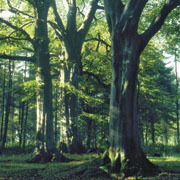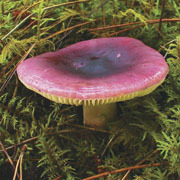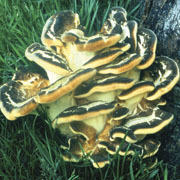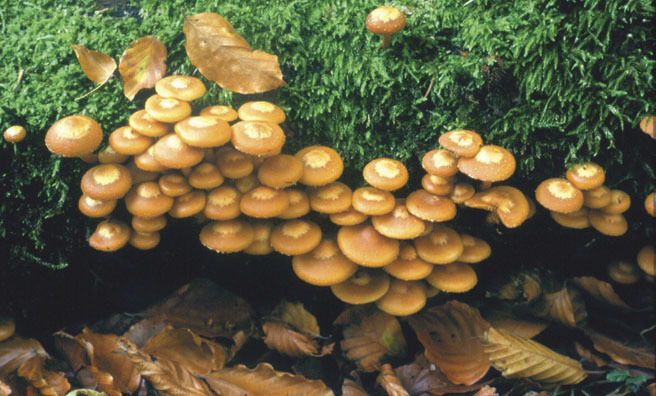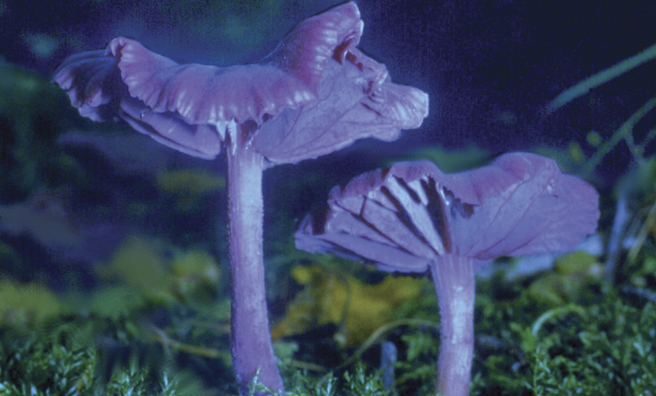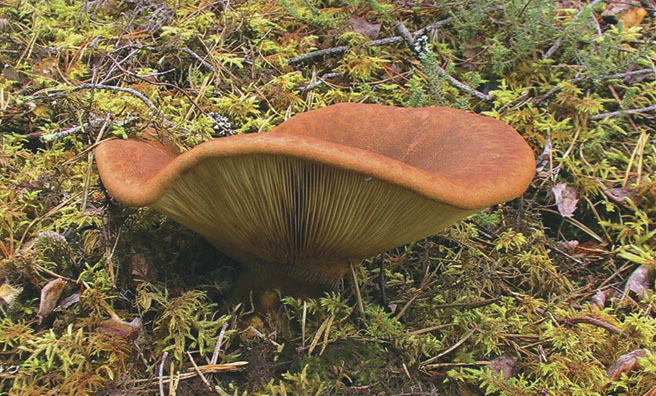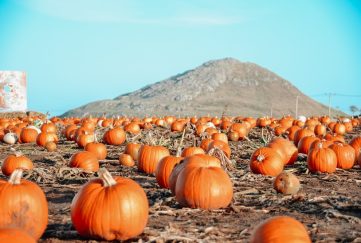If You Go Down To The Woods Today…
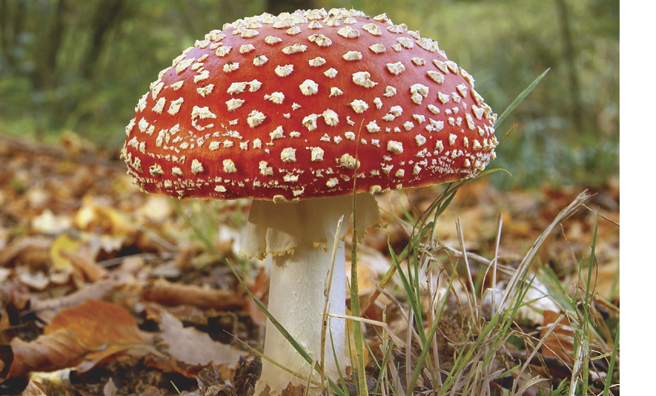
Glowing oranges, ruby reds, delicate russets.
Like the changing colours of the forest canopy, fungi are the final glories of the woodland floor before winter shrivels all before it.
A series of gentle showers in early August into September followed by warm sun heating the ground creates the perfect humid conditions for flushes of fungi – the ideal time to go on a “fungus foray”.
On tree stumps, logs and branches, grass meadows and verges, in leaf litter and pine needles on the forest floor, strange denizens of every shape and form spring forth. Everyone is familiar with the typical mushroom cap, but some are shaped as tall tubes and funnels (Stinkhorns and Milk Caps). Others are globes like footballs (Puffballs and Earthballs). Weirdest of all are the star-shaped Earthstars – looking like miniature moon landers – the branched Stag’s Horns, Coral Fungi and Fairy Clubs, and species like the Fluted Bird’s Nest with its bizarre little balls inside a “nest” – resembling tiny bird’s eggs.
Arable fields and grasslands are the place to find Field and Horse Mushrooms, lawns for Wax Caps, Ink Caps and the fragile Grass Gallerina. In coniferous and broad-leaved woodlands of oak, beech or birch, anything can turn up. Under trees are scarlet or ochreous Russulas, among them the dangerous Russula emetica or Sickener. In open glades Blushers, Wood Blewits, Tawny Grisettes and Boletus toadstools spread their rings. Log piles, old stumps and fallen timber are the province of the sulphurous-coloured Giant Polypore. Mossy stumps and the base of trees attract huge growths of Sulphur Tuft and Shaggy Pholiota. On standing live and dead trees, giant brackets like Beefsteak Fungus, Giant Ganoderma and woody Hoof Fungus (Fomes fomentarius) show that a tree’s days are numbered.
Sheer perfection, waiting to be painted into that fairytale picturebook.
Every so often weather can favour a spectacular flush of fungi and the woods are massed with species you might not otherwise see. Only once I had ever seen a few, poor specimens of the elusive scarlet-and-white spotted Fly Agaric Amanita muscaria in Ayrshire – until one autumn visit to stunning Culbin Forest near Forres in Moray. Every grassy track, ride and glade was peppered with fungi of many species. Fly Agarics were everywhere, especially under silver birches! Some were at the early button stage – little balls of blood-red – others disintegrating. Many were fully expanded and sheer perfection standing in little groups waiting, you might imagine, to be painted into that fairytale picturebook.
Fungi’s very nature of digesting – causing rot but breaking down organic matter – is also its strength as one of nature’s recyclers and fertilisers. Slimy, jelly-like, leathery or woody fungi textures, you might imagine, hardly seem ideal food for animals. On the contrary, snails and slugs can often be seen rasping holes in toadstool caps. Flies and bluebottles suck up the sticky brown spore mass on Stinkhorns attracted by its carrion stench – the main agents of its spore dispersal. Mice, rats, squirrels, badgers, foxes, deer and wild boar all relish the autumn fungus harvest as well as foraging humans.
Trendy TV chefs like to suggest it is cool to eat fungi. It’s not really. Fungi mostly taste bland, while species like Fly Agaric, Death Cap or the beautiful shining white Destroying Angel, among many others, are deadly poisonous. All fungi contain toxins, and ingesting a species like Death Cap can cause a prolonged, agonising death. True, you might not die from a serious poisoning episode – but you could end up on kidney dialysis for the rest of your life.
If you do collect fungi to eat, there must be absolutely no doubt over identification. This is of the utmost importance – you must be one hundred per cent certain. Familiarising yourself with hundreds of fungi species by direct observation or advice, and through books and identification guides, is vital in order to learn, but takes a long time. If even slightly unsure what species you are looking at, don’t ever consider gathering it. Why take the risk?
Leave the fungi to those who need them more – the slugs, squirrels, foxes and deer. Better to look at and don’t touch those fascinating gems of our autumn countryside, the remarkable and colourful fungi – a feast for the eyes indeed!
- Many fungi can be found in leaf litter under mature canopies
- Purple Russula is found under conifers
- Giant Polypore on a beech stump
- Cluster fungus
- The beautiful but very poisonous Fly Agaric
- The incredible Amethyst Deceiver turns violet when damp
- The Orange Milk Cap exudes hot, milky latex
Fungi Facts
- Never eat fungi that you can’t identify – there are 14 species of deadly mushroom in the UK
- There are 3000 different mushrooms and toadstools in the UK
- Fungi do not photosynthesise but get the nurients they need to grow from organic material like dead wood and leaves
- Go online to find a local fungi group or guide – there are many around the country


